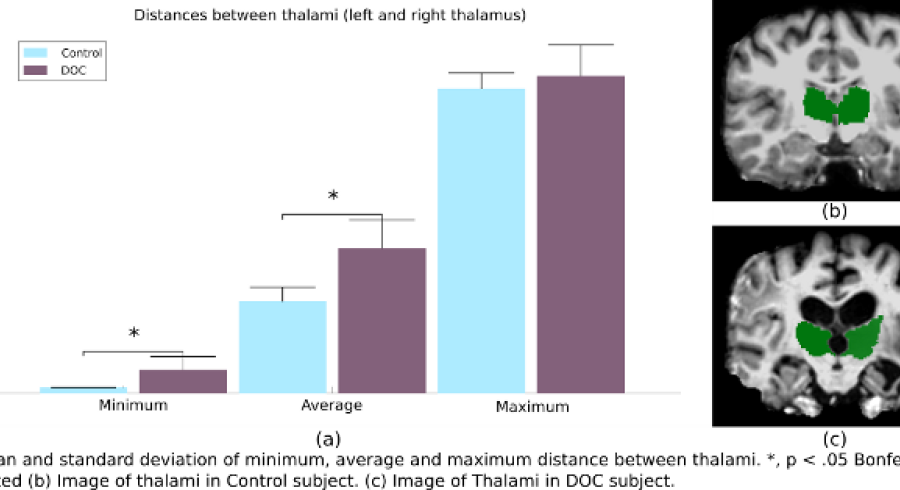Disorders of Consciousness (DOC) remain among the most poorly understood brain injury conditions of modern neurology. It has been proposed from postmortem studies that brain structural preservation may be associated to the level of consciousness under these conditions. Recently, In-vivo evidence from diffusion tensor imaging suggests that severe structural damage in the thalamus can be related to impaired consciousness states [2]. These characterizations do not consider possible changes in the spatial relationships among brain anatomical structures. Nevertheless, these variations are a natural consequence of physiological deterioration induced by the underlying aetiology. We hypothesized that measurements of the spatial relationships, in particular between thalami (left and right), can be used as a marker of the structural damage related to DOC conditions.


